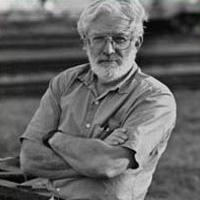Hi Joe,
Not really a problem. If I expose it in Zone 7, then I expect to develop it to Zone 7 density. Period!
Now, I may want to print it as Zone 6, and I can always do that by giving it more time under the enlarger. But the real crux of this issue is with the lower zones, not so much with the middle zones. I use a higher ASA simply because Zone 1 has no real meaning photogaphically (sensitometrically, yes; photographically, no!) It has too little density to separate itself from Zone 0, so I ignore it, as if it doesnt exist. (Its only importance is in the negative, where it begins the doubling of exposures to achieve higher zones, and therefore it has importance as a sensitometric starting point, but little photographic value.) Furthermore, since the initial zones are on the toe of the exposure/density curve, where density separations are so meager (meaning, of course, that print tonal separations are meager, as well), I want to largely ignore the toe of the curve, and get my exposures onto the straight line portion of the curve for better separations. By exposing at least one zone higher than the manufacturers recommendation I have a somewhat denser negative, but I enjoy far better tonal separations.
So, when I place a value in, say, Zone 3, it is MY Zone 3, which is the manufacturers Zone 4. But its always MY Zone 3! So thats the density that I expect. Later, If I want to print it at Zone 3, I have good separation built in already because Im above the toe of the curve. I simply dont confuse My Zone 3 (on the negative) with the manufacturers Zone 3.
Finally, I can do all this with confidence since the shoulder of the curve is way up there around Zone 14, 15, or even 16, and the upper limit on the negative is around Zone 16, 17, or 18. So, by placing the low zones higher, I still have a huge long way to go before I bump into any ceiling on negative exposure. Those who think that the negative has only 10 zones are afraid to use my approach because they feel that if they push things up one zone in the lower zones, theyll be jammed against the ceiling at the high end. But that ceiling is so much higher than they realize that theyre simply constricting their options and creative possibilities.
I hope that helps.


